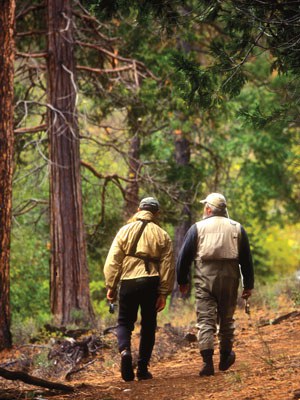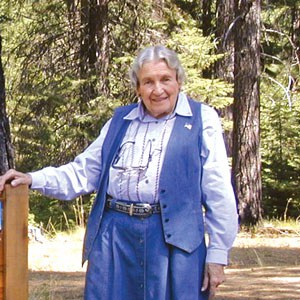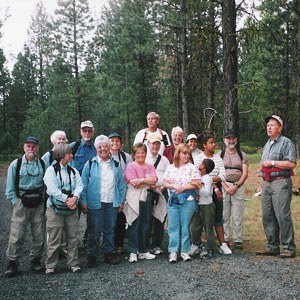In honor of the Land Trust’s 25th Anniversary, we’re sharing the stories of our flagship Preserves—the places, the people who have helped care for them, and the power they have to create a brighter future.

At the time, the Land Trust was less than seven years old, had only five staff, and wasn’t ready to launch a capital campaign to acquire such a large and significant property. The Willamette Industries land was the largest private inholding in the vast National Forest lands that surrounded the Metolius River. However, despite the challenge, it was a once-in-a-lifetime opportunity. If the Land Trust could raise $2.6 million in 18 months, we could forever avoid a destination resort on the most vulnerable site in the Metolius area, while securing the final leg of a migration corridor for the eventual restoration of sockeye salmon to Oregon.
With the clock ticking, we christened the land the Metolius Preserve and started painting a picture of its future. Central Oregon had been discovered and private land in the forested Metolius region was a rare and valued commodity, so the land was at a high risk of development. It also offered tremendous potential for fish and wildlife. Elk, deer, black bears, and cougars roamed the forested property and three miles of Lake Creek provided rich instream habitat for native fish. In fact, historically, a significant proportion of Metolius River spring chinook spawned in Lake Creek, and one of Oregon’s two native sockeye salmon runs migrated through Lake Creek to Suttle Lake. By protecting the Metolius Preserve, the Land Trust could help ensure fish and wildlife thrived in the region for generations to come. A protected preserve could also help connect the local community to the natural world with trails, interpretive facilities, and school outings.
For a young organization, generating visibility for our capital campaign was one of the biggest challenges. Fortunately, the Orvis Company, a giant in the fly fishing industry, took notice and jumped into the campaign, helping share the Land Trust’s acquisition efforts with more than 250,000 people worldwide. In the end, 950 donors helped raise the $2.6 million needed to make the Preserve a reality. On July 25, 2003, the Land Trust purchased the property and began building the future.
The largest restoration effort at the Metolius Preserve to-date was our effort to restore the pine forests of the Preserve to help improve wildlife habitat. Starting in 2005, much of the Preserve was selectively thinned to create patches of widely spaced trees intermixed with denser clumps of trees and gaps with few trees. The resulting mosaic pattern mimics nature: forests of mixed-age trees with a variety of habitats for wildlife. Promoting mixed-aged stands also helps the forest withstand wildfire, insect outbreaks, and disease, and means the forest will be more effective at combating climate change.
The Metolius Preserve has also always been a place for the local community to explore and enjoy, and the Land Trust has worked diligently to develop infrastructure and opportunities that promote discovery. Over the years, we’ve established two formal trailheads that offer natural history interpretive signage and link our trails to larger regional routes like the Lake Creek Trail. We’ve transitioned old logging roads to create new trail systems with more than ten miles of trails for walking, hiking, and biking. These trails are lovingly cared for by an awesome crew of volunteer trail stewards who help clear branches, pull weeds, and rake the pine needles so visitors can find the trail! Huge thanks to Carol Wall, Pat Kearney, Bill Mitchell, John Danahy, and Peggy Frede—our team of volunteer trail stewards who lead this effort! Finally, we’ve offered hundreds of events to share the Metolius Preserve with our community—everything from walks, hikes, work parties, and our annual Metolius Preserve Tree Hunt.
As the Land Trust celebrates its 25th anniversary, the Metolius Preserve is a beacon of light and hope for the future. It is a testament to what we can accomplish together as a community. With you by our side, we can protect special places for future generations. We can return health to the natural world. We can learn from the land and the people who care for it. What does the next 25 years hold for the Metolius Preserve? Undoubtedly adapting and changing as the natural world, our climate, and our community grow and change. Your Land Trust will be here as a guide along the way. We hope you’ll join us!
Learn more:


